
|
         
|
|
heritage
|
|
historic buildings in and around Oeuf
|
|
|

|
|
|
|
in Oeuf
|
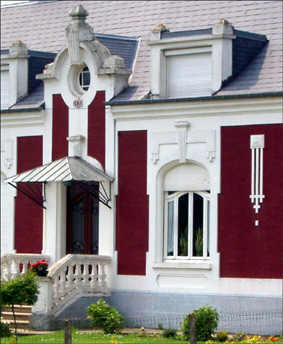
|
Except for the church(tower) Oeuf has no listed monuments. There are some monumental houses however, most on the rue d'Agerue, the stone house at number 24 (photo above) for example or the Art Deco-style house opposite the church, dating from 1925 (photo left).
|
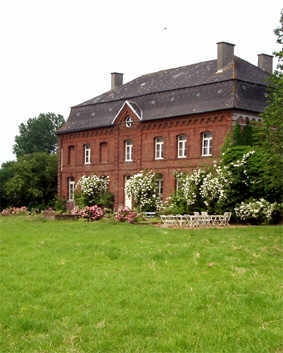
|
Next to the sports field at Le Rietz stands a nineteenth century maison de maître with mansarde roof (photo).
|
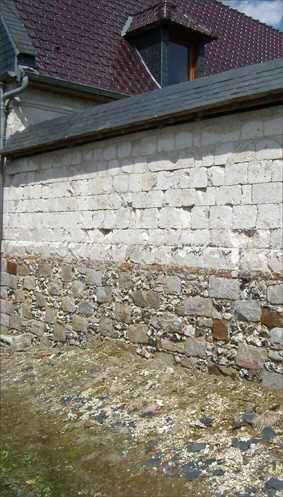
|
Some houses clearly show that their history stretches many ages. The house at the corner of the rue d'Humières and the rue d'Agerue for example, the chequered pattern in the lower part of the wall (photo, drawing) consists of dark flint cobbles alternated with square blocks of sand stone. This way of constructing resulted from the need for solidity, the locally available material and the extent to which this could be shaped (flint cannot easily be cut into square blocks).
|
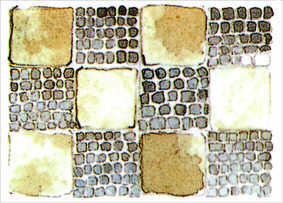
|
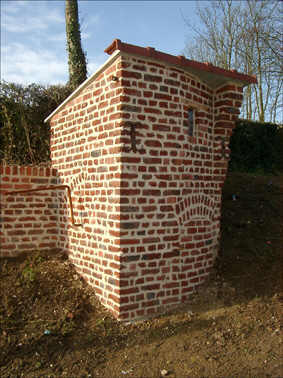
|
Two public wells have been preserved in Oeuf, one at he beginning of the rue Linzeux (photo) and one at Le Rietz (next to the sports field).
|
|
|
|
nearby
|
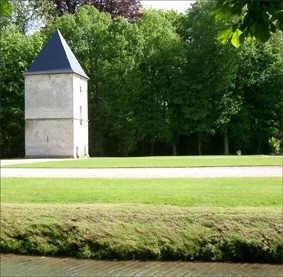
|
More significant monuments are easily found in the direct vicinity of Oeuf. Nearly every village has a monumental church -church buildings dating from the seventeenth century are not exceptional- and about one in four villages has a château, usually dating from the seventeenth or eighteenth century. Most of them are still lived in, in some cases by the offspring of their founders. Châteaux in this category are that of Willeman (photo: dovecot next to the château), that of Neulette (photo), the former abbey of the soeurs noires in Vieil-Hesdin (photo: shrine in the outer wall), the château of Hautecloque and that of Sains. These châteaux are not normally open to visitors; some however open their doors during 'heritage days' (journées de patrimoine) in September each year.
|
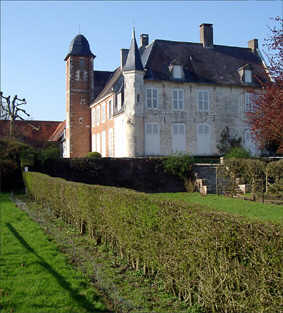
|
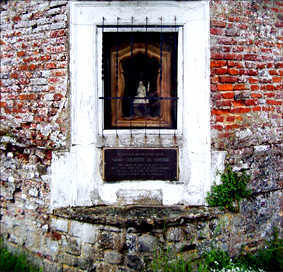
|
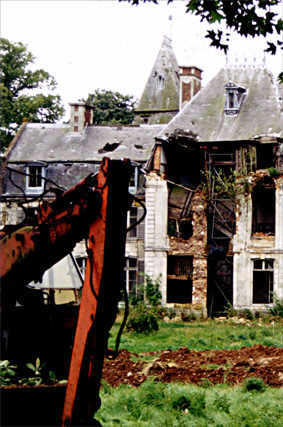
|
The châteaux of Humières (photo: East wing before restoration) and Flers (photo: roof of the entrance building), both Belgian owned, are currently being restored.
|
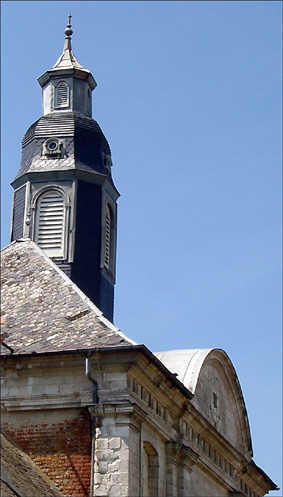
|
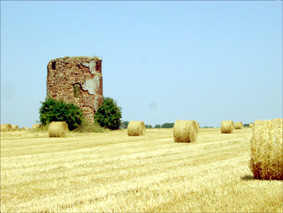
|
Of the once numerous windmills in our region very little is left. The ruin (photo) next to the road from Croisette to Nuncq (D104) is one of the few remains.
|
|
|
|
to visit
|
|
|
Medieval castles and ruins that can be visited are mentioned in the battlefields section. Here I will discuss châteaux from the eighteenth century that can be visited. All charging for admission and all at some distance from Oeuf (30 to 45 minutes by car) but for château lovers certainly worth the trip.
|
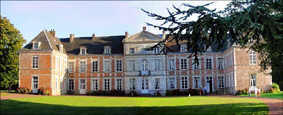
|
Grand-Rullecourt, place du Château, Grand-Rullecourt, tel 0321580637. This large château was bought in 1987 in a deplorable state by the De Saulieu family who since then have done it up completely. They now offer bread and breakfast in attractive rooms (photo). The energetic owners will be happy to show you around. See their website.
|
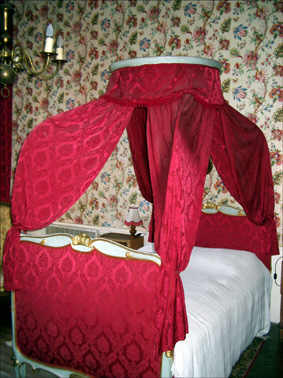
|
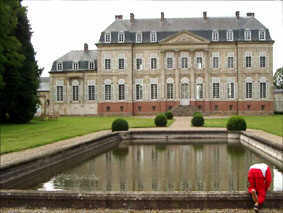
|
Barly, 6 rue de l'Egalité, Barly, tel 0321484120. Amongst the purest in style and best preserved châteaux in the region. According to many the most beautiful as well. See the extensive description on this website.
|
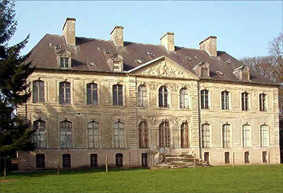
|
Couin, 11 rue Principale, Couin, tel 0321589867 mobile 0608506407. After decades of standing empty this château was bought by Mr and Mrs Vinchant in 2002. Very authentic, some rooms have not been painted since 1748. An extensive description can be found here.
|
|
|
|
heritage in peril
|
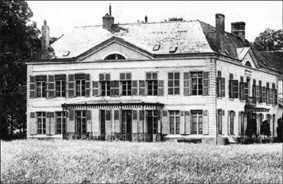
|
Unfortunately not all of our built heritage is in good condition. One of the saddest examples is the château of Humières (see above) that by pure neglect has fallen to its present sorry state. It now seems however that this château, or at least parts of it, will be saved after all. The château of Ramecourt is certainly beyond rescue: the once imposing building (photo: situation before the Second World War) has now completely crumbled, in winter its ruins can be seen from the D939.
|
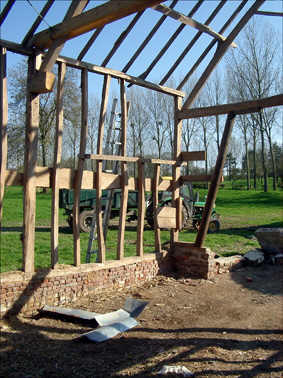
|
Less prominent old buildings like barns and stables are even more in danger which is understandable as their maintenance is costly and their use nowadays often impractical. Barn conversions (ever so popular and profitable across The Channel) are hardly known in our region. The result being that these buildings disappear at an alarming rate (photo: demolition of an old barn in Willeman) and villages lose much of their charm in the process. For those who do care: there are subsidies (in the form of a tax deduction scheme) specifically for this type of built heritage, see the website of La Fondation du Patrimoine. I can also recommend the websites of Maisons Paysannes de France and Vieilles Maisons Françaises.
|
|
|
|
for sale
|
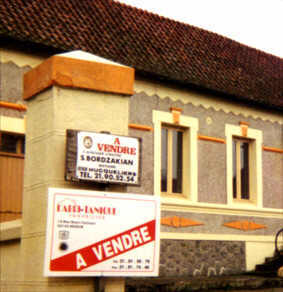
|
Those who actually want to help preserve the local heritage -or who simply are charmed by our region- might consider buying a second home here. Apart from the windows of the local estate agents (mainly in Saint-Pol and Hesdin) one could check the many websites with houses on offer, like the ones of Success Immobilier or l'Abri-Tanique. There are not many houses standing empty in our region. In fact quite a few new houses were built in Oeuf in recent years and the local property market is certainly healthy. French buyers usually prefer newly built, hassle free houses though. Properties in need of renovation therefore often end up in British, Belgian or Dutch hands.
|
|
|
© 2005 - 2010 Rob Zeldenrust, Oeuf-en-Ternois, France.
|



















